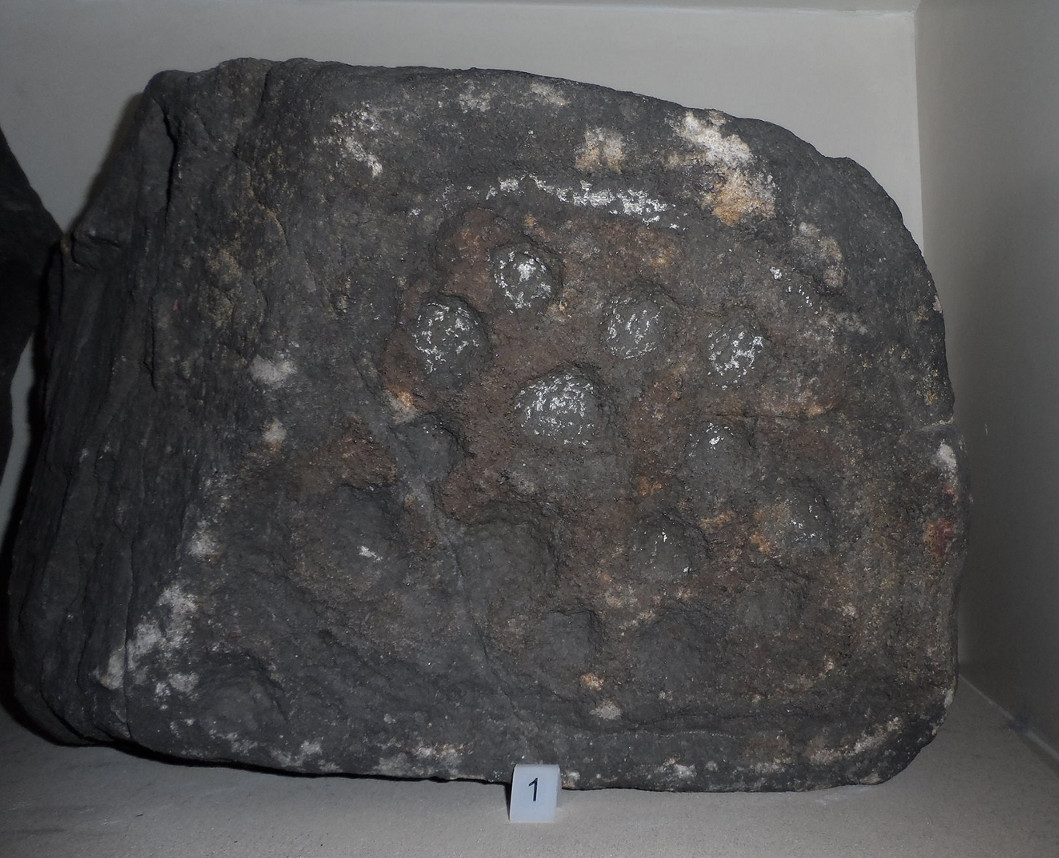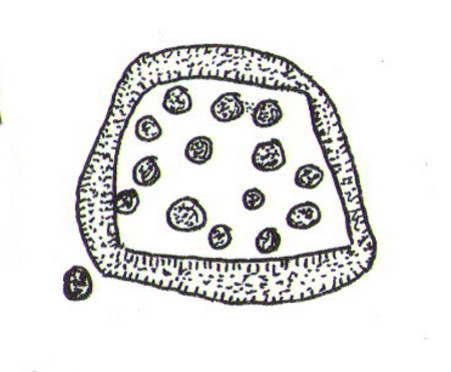Cup-and-Ring Stone: OS Grid Reference – SK 2752 7328
Archaeology & History

This carving is one of two cup-and-ring stones that were removed from this area and transported to Sheffield Museum, decontextualizing them from their landscape presence (this should not be done unless very severe damage is happening, or their destruction is imminent). It’s quite an intriguing carving, similar in design to one found not far away at Great Hucklow, the Middleton Moor 479 carving, etc. Like many Pennine cup-and-ring stones, it was located in a prehistoric cairn field (or necropolis), with hut circles not far away too, and really should have remained in situ for the benefit of future researchers.

The carving was cut into one end of a small rock and comprises of a singular unbroken, large oval, within which are enclosed thirteen or fourteen cups, plus a single cup on the outside of the ring. Lunar associations may be invoked by the 13 cups, enclosed within one cycle of the year. But I’m speculating of course. It’s probable that other carvings in the area remained undiscovered.
References:
- Barnatt, John & Reeder, Phil, “Prehistoric Rock Art in the Peak District,” in Derbyshire Archaeological Journal, 102, 1982.
- Barnatt, John & Robinson, F., “Prehistoric Rock Art in Ashover School and Further New Discoveries Elsewhere in the Peak District,” in Derbyshire Archaeological Journal, 123, 2003.
- Beckensall, Stan, British Prehistoric Rock Art, Tempus: Stroud 1999.
- Beckensall, Stan, Circles in Stone: A British Prehistoric Mystery, Tempus: Stroud 2006.
Acknowledgements: HUGE thanks to Dean Thom for the use of his photo here.
© Paul Bennett, The Northern Antiquarian
One aspect of the engraving you haven’t mentioned here, is how the outer encircling line somewhat mirrors the shape in plan of the hillfort itself. Could the ‘cups’ then represent the positions of huts and/or cairns? If the owners of said huts placed a pebble in the cup depicting their hut, it would be a handy reference for being able to identify whether or not somebody was in residence? Just a thought.